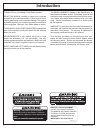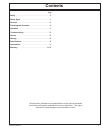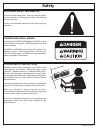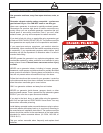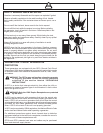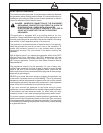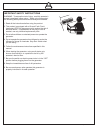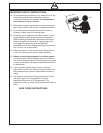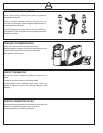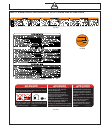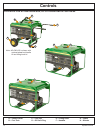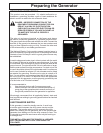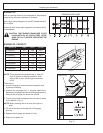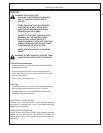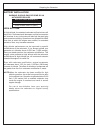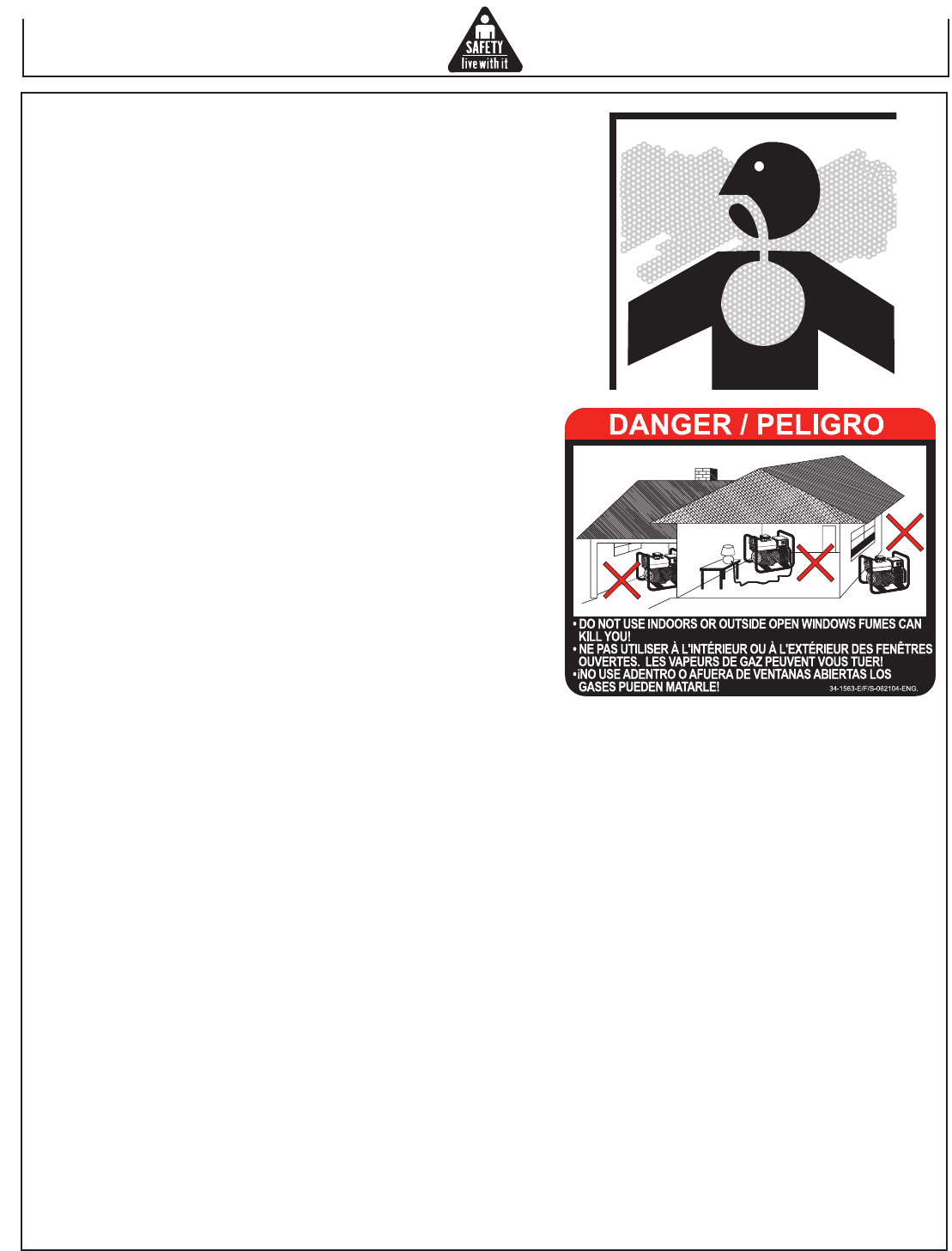
Operator’s Manual 5
CARBON MONOXIDE - POISONOUS GAS
Use generator outdoors, away from open windows, vents, or
doors.
Generator exhaust contains carbon monoxide - a poisonous
gas that can kill you. You CAN NOT smell or see this gas.
Never use a generator in enclosed or partially-enclosed spaces.
Generators can produce high levels of carbon monoxide very
quickly. When you use a portable generator, remember that you
cannot smell or see carbon monoxide. Even if you can’t smell
exhaust fumes, you may still be exposed to carbon monoxide.
If you start to feel sick, dizzy, or weak while using a generator, get
to fresh air RIGHT AWAY. DO NOT DELAY. The carbon monoxide
from generators can rapidly lead to full incapacitation and death.
If you experience serious symptoms, get medical attention
immediately. Inform medical staff that carbon monoxide poisoning
is suspected. If you experienced symptoms while indoors, have
someone call the re department to determine when it is safe to
re-enter the building.
NEVER operate the generator in an explosive atmosphere, near
combustible materials or where ventilation is not sufcient to carry
away exhaust fumes. Exhaust fumes can cause serious injury
or death.
NEVER use a generator indoors, including in homes, garages,
basements, crawl spaces, and other enclosed or partially-enclosed
areas, even with ventilation. Opening doors and windows or using
fans will not prevent carbon monoxide build-up in the home.
Follow the instructions that come with your generator. Locate the
unit outdoors and away from doors, windows, and vents that could
allow the carbon monoxide gas to come indoors.
ONLY run generator outdoors and away from air intakes.
NEVER run generator inside homes, garages, sheds, or other
semi-enclosed spaces. These spaces can trap poisonous gases
EVEN IF you run a fan or open doors and windows.
If you start to feel sick, dizzy, or weak while using the generator,
shut if off and get fresh air RIGHT AWAY. See a doctor. You may
have carbon monoxide poisoning.
Install battery-operated carbon monoxide alarms or plug-in carbon
monoxide alarms with battery back-up in your home, according to
the manufacturer’s installation instructions. The carbon monoxide
alarms should be certied to the requirements of the latest safety
standards for carbon monoxide alarms. (UL 2034, IAS 6-96, or
CSA 6.19.01).
Test your carbon monoxide alarm frequently and replace dead
batteries.




